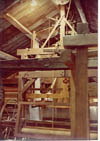 |
||
 |
||
Gallery
|
 Silhouette 1800 |
 Erie Canal 1800 |
 Jacquard loom (Shelburne Museum copy) , 1804 |
 Francisco Goya Nude Maja, 1804 |
 Camera Lucida 1807 |

Copyright © Irving Fang and Kristina Ross, 1995-1996. All rights reserved.